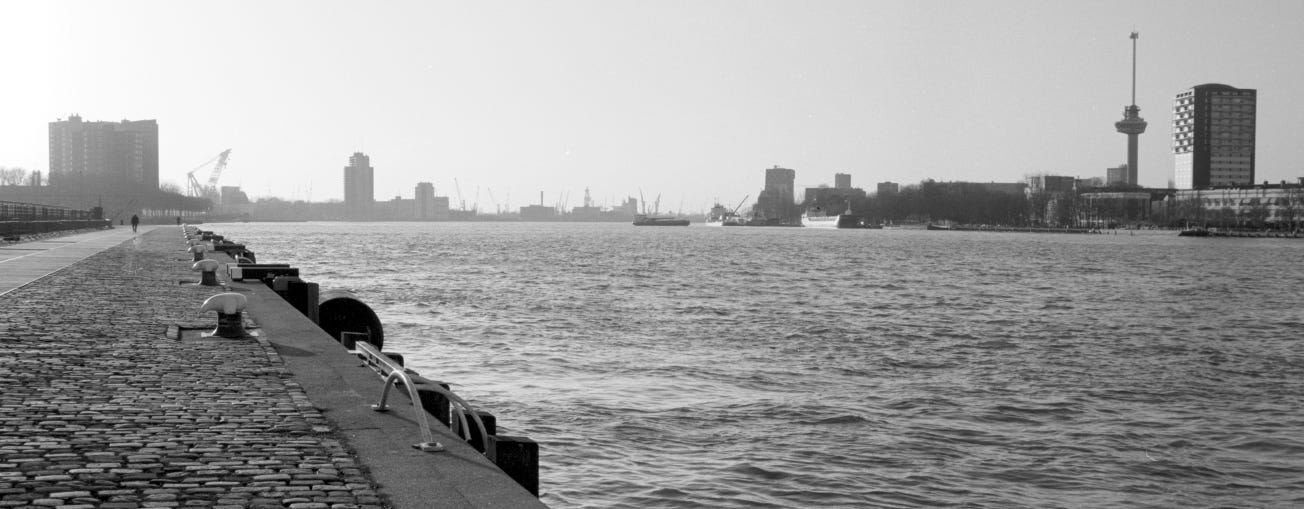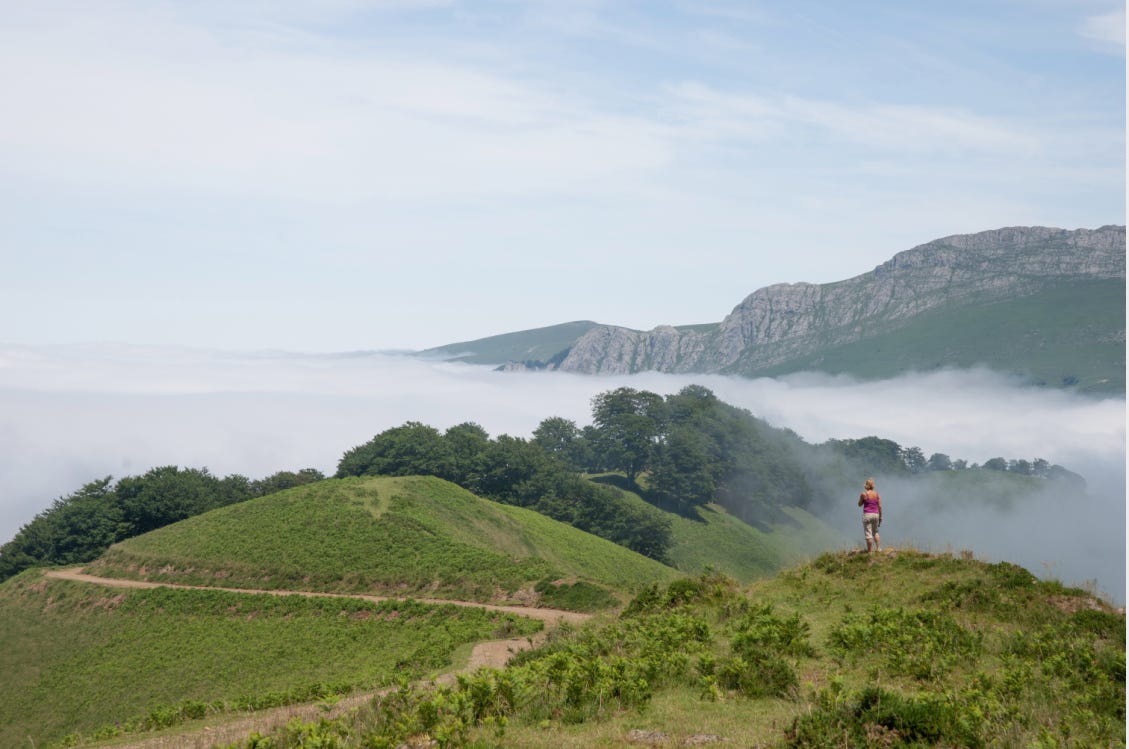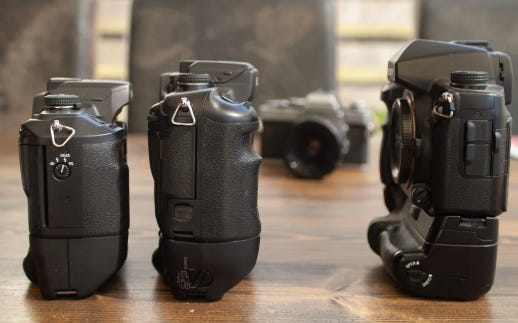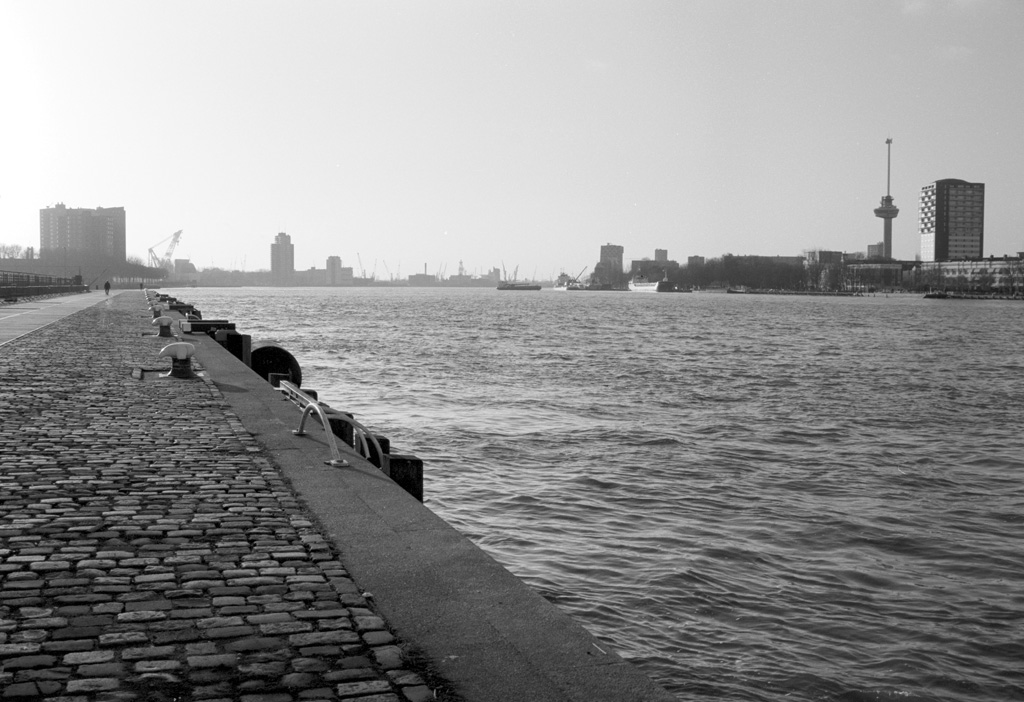No, this is not the eternal Canon vs. Nikon debate… if only because I avoided that route altogether (more on that later). This goes into the question itself — does it matter what gear we use?
Without further ado, here’s my version of The Answer:
1. It depends on the photographer’s personality
Some of us apparently do not give a fuck what camera they use.
I must admit I don’t personally know any photographer who looks upon their gear like that, but hey.
I, however, am a geek (some say a nerd, and they might not be wrong).
I have spent years figuring out what I like in photography gear, and thus honed my preferences. And then I got older, making me appreciate autofocus a bit more – I can focus manually just fine when I’m not tired, laying on my belly in the wet grass on a dreary day. But on my eyes, focusing precisely is tiring.
But more importantly, as a geek, I *love* gear. I love the way it works. I really appreciate and enjoy the feeling of hearing the shutter sound (and the sense of confidence this instills in me) and feeling the transport at work, of a pro-level camera body. I really like the smooth focusing and zooming action of a well-built lens. And I really like it when I can operate a camera without having to check the owner manual every time I want to use the 2 second shutter delay.
And multiple times, I have gone through the thrill of receiving and unpacking a camera that I have wanted for a long time.
So yes, to me, gear is important. And I’m pretty certain I’m not the only one.
Some may think that’s nonsense and/or immature, and I should focus on the creative process rather than on the gear. That’s fine. I don’t give a floating fornicate what you think I should do.
I do not photograph to please anyone except myself. Nobody pays me for it. I’m here to enjoy this, and I will.

2. It depends on the photographer’s “assignment”.
This is where things are starting to make sense. Nobody in his right mind is going to lug about all their gear on a photo walk or trip. Even though I have a touring motorcycle with two side bags and a top trunk, that would require a small trailer. So, what you’ll usually find yourself doing is choose wisely.
If I’m out and have no idea what, if anything, I’ll bump into, I’ll usually bring one camera (most often digital), and one zoom lens.
Why digital? Because it makes choosing between b&w and colour, or between different “film speeds” so much easier. It’s like bringing a camera with interchangeable backs, and a practically limitless number of backs.
For street photography, I aim for speed and agility. One lens (not an intimidating rocket launcher type), one fast camera (fast to operate, automatic exposure, fast shutter response, relatively quiet operation) and one fast film – either an ISO400 or a Kodak TMAX3200.
I used to have a rangefinder camera (a Minolta CLE), but I hardly used it, so I parted with it. Nowadays, street photography will either bring out the XE-1 with a 35-70mm zoom, or the Konica-Minolta Dynax 7d, which is lightweight, dependable, has a nice BIG viewfinder for a DX camera, and has a nice 18-70 zoom that weighs next to nothing, is fairly quiet, doesn’t look intimidating, and yet provides better results than I expected when I bought it.
My wife has a NEXUS 6 which she hardly uses; this camera might take slots for street photography as well.
For nature walks, I usually bring the Alpha 99 (resolution power and full frame), with the Carl Zeiss 24-70/2.8 T* and a Sigma 12-24/f4.5-5.6 for when I want to get a bit more perversely extreme. If I can see a macro opportunity coming along, I’ll also bring the Minolta AF 100/2.8, which will do 1:1 macro AND gives me a nice longish focal distance.
“… huh? A tele for landscapes?”
Yup. If you’re going to argue that landscapes always dictate a wide-angle lens and I shouldn’t bring anything but, it’ll be pistols at dawn.
I’ll probably get back to how your focal length influences your composition, but sometimes, a scene where you want to draw the background in a bit will benefit from going a bit tele.

Speed of operation is usually not necessary… my landscape pics take way too much time already. A tripod might be essential – for me it often is. More on that here (the what) and here (the why).
If you have a specific plan, you will usually find yourself picking the gear that suits the plan best. Sometimes, especially during dull days, I’ll go as far as bringing a remotely controlled flash on a stand. You’d be amazed at what you can do with those 500 extra grammes.
3. It depends on your mood
Whatever tickles your fancy, and inspires you to go out and take pictures, is what you should bring!
I’m a geek. I like gear. I like different kinds of gear.
I grew up on ‘60’s and 70’s cameras. My first own camera was a Minolta SR-T101, and I also quickly got an XE-1 and an XD-7. Largely mechanical, legacy stuff.
I also used to have an XM and XM Motor, which I acquired secondhand, but these cameras added more value to my bank account when I got rid of them than to what the XE-1 could already do.
As I got older, and had more trouble accurately manually focusing, I decided to look into autofocus as well. I already had quite a bit of Minolta optics for my A-mount digital cameras, so the film-based Dynaxes were a logical choice. The Dynax 9 and 7 that I bought (both way underpriced!) are my favourites.

I’m still a kid
All these cameras are my toys. I turned 67 on Christmas Eve 2024, and I’m still the same kid who likes his toys and wants to play with them. They drive me outside, and they inspire me to do stuff.
And every now and then, I get good pictures doing so.
Yeah, maybe I could’ve taken that picture with my phone.
But I didn’t. Maybe I wouldn’t have made that picture if I only had my phone.
And yes, it also happens that I hit upon something and I don’t have a camera with me. Then I might grab my phone and make that picture anyway. I’ve gotten some pictures I really like that way too.
I want to dedicate one or two articles to the gear I use, how I use it, and why. I would like to dedicate the first one to lenses, and how they affect what’s gonna be on the photo.
I hope that this contribution clarifies my take on the Gear Factor.
So, there’s one more thing to cover here. You’ve been reading the word Minolta all over the place, so you might wonder, isn’t it time for me I tried me some Nikon or Canon?
Well, if you’re curious about how I learnt to stop worrying and love Mount Rokkor, read on and see what happened between 1972 and now.
The early years

Rewind to 1972. I was fourteen years old, and had been working all summer to be able to afford my own camera. Up to then, I had borrowed my mother’s camera (a Petri rangefinder), and sometimes the Leica III of her boss (she worked for a pro photographer then), but I wanted my own camera, and I wanted it to be an SLR. In fact, I wanted a very specific SLR: the Nikkormat FTn, which was considered the Dog’s Whatsits in these days.
It just so happened that the largest Nikon Professional dealer in The Hague was around our corner in the Vondelstraat. My mother and I knew him well – and he knew me and how I liked to photograph. So, by the time I had gathered the loot, I went there and stated my wish.
He looked at me quizzically and said “I’ll cut you a deal. Take these two cameras to the Paleistuin (a palace garden nearby), and take as many photos as the films will take. Specifically make photos of the ducks in the pond when they come to you to be fed, and make sure the background is out of focus (he knew I knew how to do that).”
“Then, come back, I’ll develop the films and make prints this evening, and tomorrow at around lunch, drop by and we’ll take a look at the photos you like best.”
One was a Nikkormat FTn, brand new, with a Nikkor 50/1.8, the other one a Minolta SR-T101 demo camera with an MC-Rokkor 55/1.7, both filled with Tri-X.
Long story short – I was elated at how good one set of prints looked – they didn’t have in-your-face center sharpness, but excellent edge sharpness all around, and the way the textures and shadows were rendered in what I thought was a German fashion… almost like the Leica I had borrowed on two occasions. But most importantly: on that set, the rendition of the out-of-focus highlights was creamy as butter, whereas on the other set, they were much harsher.
After the excitement came the disappointment: this set was not the film from my coveted Nikkormat.
Try to imagine a 14-year-old boy who suddenly discovers that his Holy Grail had just… not just lost a battle, but was blown out the water.
This was my first encounter with Rokkor optics.
The kid didn’t give up without a fight, though. “But isn’t the Nikon a much more advanced camera?”
The owner then explained to me that no… if anyone deserved the title of most innovative camera builder of the time from the early sixties onwards, it was, in fact, Minolta. First camera with metering through the lens, first camera with metering wide open, best light measuring strategy (CLC, which Nikon would later adopt as well), best and simplest to use lens mounting system (no fiddling with the aperture meter coupling). But in his view, the lenses were the best reason to choose the Minolta brand.
Anyway, he cut me an excellent (read: seriously underpriced) deal on the SR-T101 AND a used MC-Rokkor 135/2.8. It took me awhile to overcome my disappointment, but the more I used it, the happier I got… and I never looked back since. Two years later, I got an XE-1 (which is the XE-7 in the US, I think), which, to my relief, was an order of magnitude more usable than the Nikkormat EL which was taking the world by storm, and in 1979 I got me a nice black XD-7.
I still have them all. The SRT hardly gets any usage – it is outgunned in every respect by the XE-1, mainly because of the better shutter… and the XE-1 is outperformed by the XD-7, which has a much brighter viewfinder, and which will shut off automatically if you stay away from the shutter button. Both the XE and XD use normal, widely available LR44 batteries, so no problem there.
Defending our borders with Canon

From 1978 until well into 1979, I was drafted, and I quickly managed to secure a spot as the photographer for the brigade I was in.
Now it just so happened that the brigade I was in had a farm of Canon A-series cameras: the AV-1, the AT-1 and yes, the A-1.
Why three?
Because, invariably, at least one out of three would be out of commission! The most frequent problem was the Canon Squeal of Death, shutter issues and the battery door coming off. I had no issues with the XE-1 at the time, so I ended up using that about half of the time.
Having said that, Canon had some fine lenses in these days – they definitely had that advantage over Nikon.
Our German counterparts used Nikons (the F-series). They never had any reliability problems.
So yes, I did get to play with Nikon and Canon quite a bit as well.
Between 1980 and 2000, not much happened. From the money I had saved while in the army, I got me an XD7, with a MD 50/1.4, which I still have and use. I tried the X700 – which I think is a very adequate camera, but it didn’t give me the buzz of the XE-1 or XD-7. I also briefly (VERY briefly) tried the Minolta Dynax 7000 because autofocus, but parted with that quickly, as I found the autofocus quite disappointing.
2003-now
Fast-forward to the beginning of this century, and I’m looking at digital. I was thrilled at the prospect of using one camera for ISO50 to ISO-whatever it would take me to, and to be able to process the results without having to sniff fixer.

Since, at that point in time, I did not own Minolta autofocus lenses, and since Minolta was, after a first attempt with the RD500, late to the party, I felt I could move away from Minolta. I got myself a Fuji S2 Pro (based on the Nikon F80 if I remember correctly), and some Nikkor glass to go with it – I had reckoned that Nikon would’ve fixed their optical issues by now, and indeed their 18-70 kit lens was an excellent bit of kit, better than the 18-55. I had a Sigma 400mm and a Sigma 70-200 f2.8 (which was very good) and got myself the 50mm f1.8 AF lens and the 85mm/f1.4 (which was excellent).
The first disappointment was the viewfinder. The Dutch word for viewfinder is “searcher”, which I found to be an accurate term; “finder”… not so much. I called it “the light at the end of the tunnel”. Manual focusing was effectively impossible.
The second disappointment was that the 50mm f1.8 still had that old Nikon problem. One particular picture I made had an out-of-focus area in front of the subject, and it looked horrible.
As luck would have it, Minolta (now almost dead, but financially strutted by Konica) introduced the digital version of their excellent Dynax 7 film camera. This didn’t really sell well, so they decided to call it a day, and Sony acquired the company early in 2006. As a result, the Dynax 7d was sold for about a third of its original price, and I gobbled one up.
One look through the viewfinder and I was hooked – it was almost as large as the full-frame Canon, and larger than anything else I had seen.

So, out went the S2 Pro (which was otherwise quite the adequate camera), and in came the Dynax 7d, and I started to gobble up Minolta AF glass. Old stuff was fine, because the anti-shake was in the body, rather than in the premium lenses. A stroke of genius, that. And since Minolta was in a bind after having been taken over by Sony and everyone expecting that the legacy would disappear, second hand prices tumbled.
Then, the Minolta name disappeared off the prism, to be replaced by Sony. But their first offering, the Alpha 900, was essentially a Dynax 9 in a different suit, so I wasn’t worried.
And that brings us to now. The Konica-Minolta Dynax 7d is still in the house, but gets limited use. It is a nice camera to carry around – not too heavy, and the kit lens is superbly light and performs a lot better than it’s entitled to at the price. But the Alpha 900, which I acquired when it came out, blew it out of the water. The only problem with it was the fairly high noise level at ISO settings over 400.
I then got me an Alpha 77. Also 24 megapixel, but on a DX (half-frame) sensor. Turned out that noise was still a problem with that one. So I got me an Alpha 99, which performed a lot better at higher ISO settings. But otherwise, it was a nice camera, and an improvement in usability over the 900.
And then, with the permission of my lovely wife, the Alpha 99-II entered the house. The 99 II’s sensor is so much better at higher ISOs, it’s not funny. Also, the autofocus is much faster, and it packs features its predecessor never heard of. It is essentially the Sony A7-RII, but in a better body, and using the Minolta A-mount! If, like me, you have a load of Minolta AF/Sony A-mount lenses, the Alpha 99-II is the ultimate camera (the God Camera, as DPReview calls it).
And yet, somewhere along the line, I discovered that, at ISO100, the Alpha 900 is still the best camera in the house.
Every digital sensor is afraid of bright reds. Red light actually has more energy than we perceive as brightness, and I suppose that for that reason, red subjects make the sensor clip much earlier than you’d think.
Except, from some reason that I can’t quite fathom, on the Alpha 900, and its predecessor, the Dynax 7d! When the subject has a lot of red in it (say, a velvet red gown or curtain), the 900 resolves detail in these areas better than any other digital camera I’ve tried (and I wasn’t the only one to notice this)!
And to add insult to injury: my wife is a painter. My task is to photograph her paintings as accurately as possible. The only camera I’ve tried to do that with that will actually do this is the, now 16 year old, Alpha 900.

So, as a camera to use in my homegrown studio, it lives its best life now.
I did consider getting into Sony’s new E-mount, but quickly decided that I had too much money invested in the A-mount to justify that, as a hobbyist approaching retirement… so there’s that.
I did play around with a Sony Alpha 7-III a bit, and I was surprised at how well it works at extreme, five-figure ISO settings – but no. It would involve more money than I can justify, and the Alpha 99-II, having the sensor that was introduced in the Alpha 7-RII, actually comes quite close.
So… how about film?
Yes, I still shoot film.
When someone gave me a Dynax 9Xi, I decided to give it a shot with a Kodak Gold film. When I got that, I also bought a Tri-X, which I spooled into the XD-7… for old times sake.
The result of the Gold 200 were a bit disappointing, but when I had developed the Tri-X, I found that there was a certain “je ne sais wtf” to the tonality that I had not been able to get from digital… especially the way Tri-X dealed with the highlights, but the entire tone scale worked… differently, and in a way that I really liked.
So yes, film is now back in. I do my own film development, and the negatives are scanned using a Plustek film scanner.

I still have and occasionally use the XE-1 and the XD-7. These are quite useful for me when I want to get pictures that do not require precise focusing. But as I mentioned, accurately focusing manually, especially in adverse circumstances, got harder with age. I can still see sharply (with glasses), but my eyes get tired quicker when I have to focus precisely. I can solve that using an angle finder that allows me to dial in my diopter (+3 or thereabouts), and that has a facility to enlarge the viewfinder image by a x2 factor. But in general, working with autofocus works better for me.
So after considerable research, I got myself a Dynax 7 and a Dynax 9, which are my main cameras for B&W film.
That’s it for now. I hope to be focusing a bit on the gear I use specifically, and tell you about the why’s rather than the whats.
